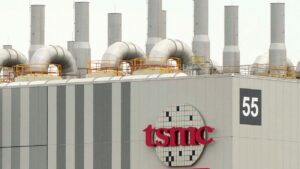An uncontrolled satellite will plunge through Earth’s atmosphere on Wednesday after nearly 30 years in orbit.
The pioneering European satellite, known as ERS-2, is expected to break up into pieces upon re-entry, the majority of which will burn up. The satellite will have a “natural” re-entry, tumbling through the atmosphere, meaning the exact timing and location are difficult to predict.
In his most recent forecast, the European Space The agency predicted the satellite would re-enter Earth’s atmosphere at 3:49 p.m. Wednesday. At this point, the satellite is expected to be over the Pacific Ocean, but an uncertainty window of more than three hours means it could be at a different point in its orbit when it starts burning up.
When it was launched in 1995, ERS-2 was “the most sophisticated Earth observation spacecraft ever developed and launched by Europe”, according to the ESA, and revolutionized our understanding of the climate crisis.
“It has provided us with new insights into our planet, the chemistry of our atmosphere, the behavior of our oceans and the effects of humanity’s activities on our environment,” says Mirko Albani, the head of ESA’s heritage space programme.
The satellite was retired in 2011 and the ESA decided to “deorbit” it to reduce the chance of a collision with another probe.
Pictures of the satellite tumbling into the atmosphere were released by the ESA on Monday. The images were taken between January 14 and February 3, when ERS-2 was still at an altitude of more than 300 km (186 miles).
It fell at more than 10 km (6 mi) per day, with the speed of its descent rapidly increasing. When it reaches about 80 km, it will start to break and then burn up. The exact timing is uncertain due to unpredictable atmospheric conditions, which can increase or decrease drag on the satellite. It is also not known which direction the tumbling satellite is pointing, which also affects its orbit.
The vast majority of the satellite will burn up, and any pieces that survive will be scattered somewhat randomly over a ground track, on average hundreds of kilometers long and a few tens of kilometers wide. “The risks associated with satellite re-entry are very low,” the ESA said.
“It is worth emphasizing that none of the elements that can re-enter the atmosphere are radioactive or toxic,” Albani said.
Dr James Blake, from the Center for Space Domain Awareness at the University of Warwick, said: “There are now thousands of active and decommissioned satellites orbiting the Earth and ERS-2 is the latest to undertake the return leg of its journey as it again – enters the Earth’s atmosphere. This is a fate that awaits uncontrolled satellites and debris that can no longer counteract the drag forces exerted by the Earth’s atmosphere – indeed, operators are encouraged to speed up the re-entry of their decommissioned satellites to free up space for future missions.”




